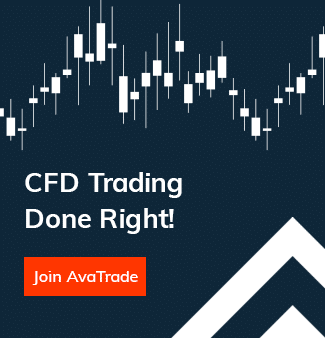SPI/ASX 200
| MT5/MT4 Symbol:SPI200 |
| Instrument:SPI 200 |
| Country:Australia |
| Currency:AUD |
| Exchange:Sydney Futures Exchange |
| Trading Hours (GMT):22:50-05:29 & 06:10-20:59 |
What is the ASX 200 Index
The ASX 200 is an index of 200 stocks of companies with the highest market capitalization listed on the Australian Securities Exchange. Because it represents the biggest companies in the country, the ASX 200 serves as a definitive, credible barometer of Australia’s economy. It is effectively the benchmark stock market index for the Australian stock market.
The ASX 200 was inaugurated on March 31st, 2000, when Standards & Poor took over its maintenance. It replaced the All Ordinaries index to become Australia’s primary investment benchmark, and it currently accounts for over 80% of the Australian equity market.
The ASX Index was created to provide a highly liquid tradable index with low turnover. This has allowed the index to serve as a benchmark for not only investment returns, but also for the construction of further S&P/ASX 200 indices, such as the ASX/SPI 200, ASX/SPI 200 Growth, ASX/SPI 200 LCSI and ASX/SPI 200 VIX.
Start trading ASX/SPI 200 with Friedberg Direct and enjoy the benefits of trading with a regulated Canadian broker!
The ASX 200 launched at a price of 3133.3, which was the same value of the All Ordinaries on March 31st, 2000. It is currently trading at circa 5900 (February 2018), just below the psychological 6000 level.
It crossed 6000 for the first time since the Global Financial Crisis of 2008 in October 2017. Its all-time high of 6749 was posted in October 2007, just before the GFC.
Why Trade the ASX Index
- Liquidity: The index offers high liquidity thanks to the level of activity that takes place among the numerous stocks that constitute it.
- Smooth Price Action: The index has a smooth price action and is less prone to market shocks, as no one stock can significantly influence its overall price.
- Vast News Coverage: The index is one of the most traded in Asia and enjoys interest from investors all over the world. This ensures that it enjoys massive news coverage, which makes both technical and fundamental analysis all the easier.
ASX 200 Trading Information
- MT4/MT5 Symbol: SPI200
- Trading Time: Monday – Friday 10:00 – 16:00 Australia/Sydney Time (GMT + 11)
- Country: Australia
- Currency: AUD
- Exchange: ASE
ASX Index Composition and Calculation
The ASX 200 is both a capitalization-weighted and float-adjusted index, similar to the DAX index and the S&P500 index. Market capitalization (the number of shares multiplied by the share price) determines inclusion into the index, and by being float-adjusted, the ASX 200 factors outstanding shares held by the general public, excluding those held by the government, insiders or royalty.
Like all indices, ASX 200 is measured in points and tracks the overall price movements of the 200 companies within the index. To be included in the index, a company’s stock must meet the following 3 ASX 200 requirements:
- It must be listed on the Australian Securities Exchange as an ordinary or preferred stock.
- It should be sufficiently liquid; this liquidity must not be controlled by a small section of investors.
- Its float-adjusted market capitalization must be among the 200 highest on the Australian Securities Exchange, excluding strategic holdings or new shares issuance.
S&P rebalances the index quarterly, adding and removing companies that meet or no longer meet the ASX 200 requirements, based on the previous half-year data.
The ASX 200 is one of the most traded instruments in Asia, and its widespread interest has led to the emergence of other vital indices, such as the S&P/ASX 200 A-REIT that reflects the importance of property trusts, the S&P/ASX 300 Metals & Mining that acknowledges the significance of the Mining industry in Australia, and the S&P/ASX MidCap 50 that helps investors track the performance of resource stocks.
Top 10 Companies on the ASX 200
| Name of Company | Industry | Weight (%) |
| Commonwealth Bank | Financials | 14.95 |
| Westpac Banking Corp | Financials | 11.3 |
| BHP Billiton Limited | Materials | 10.08 |
| ANZ Banking Group Limited | Financials | 8.96 |
| National Aust. Bank | Financials | 8.43 |
| CSL Limited | Health Care | 6.78 |
| Wesfarmers Limited | Consumer Staples | 5.35 |
| Telstra Corporation | Telecommunication Services | 4.58 |
| Woolworths Group Limited | Consumer Staples | 3.78 |
| Macquarie Group Limited | Financials | 3.6 |
ASX 200 Sector Representation
| Sector | Weight (%) |
| Financial Services | 35.2 |
| Materials | 16.1 |
| Health Care | 8.2 |
| Real Estate | 8.1 |
| Industrials | 7.5 |
| Consumer Staples | 6.7 |
| Consumer Discretionary | 6.0 |
| Energy | 4.3 |
| Telecommunication Services | 4.2 |
| Utilities | 2.3 |
| Information Technology | 1.4 |
The Factors Influencing the Overall Index Price of the ASX 200
Due to its composition, various factors (both internal and external) affect the overall price of the ASX 200. To start with, the ASX 200 is predominantly composed of financial and material stocks; thus, industry performance will have a significant bearing on the price.
For instance, 4 out of the top 5 companies on the ASX 200 are financial institutions, and a significant price change in one of the major stocks, or an overall change in industry sentiment, will impact the index’s price. Financial stocks have also proven to weigh much on the ASX 200, as the index posted a 54% plunge over 16 months during the GFC.
Economic factors, such as interest rates, economic outlook and inflation, also impact the ASX 200 price. Interest rates usually have an inverse relationship with inflation, and this reflects on the stock market.
The Reserve Bank of Australia may raise interest rates to control inflation, and this will lead to low general stock prices, thus impacting the ASX 200.
Internal and global stability also impact the index. While Australia is generally a stable economy, shocks emanating from the global arena may impact its major index.
The country is a major player in the global economy, with strategic economic ties with both the West and China. Events on the global scene, such as military tension, market crashes and elections impact sentiment on Australia’s stock market, which will manifest in the price of its major index.
Advantages of Trading ASX with Friedberg Direct
- Intuitive and powerful trading platforms offering a wealth of trading strategies
- Risk management tools and innovative trade entry options, such as hard and trailing stop losses as well as limit orders
- Enjoy the safety and security of trading Forex and CFDs with a broker that is regulated throughout Canada
- Maximize profitability with leveraged trading on index trading
- 24/5 technical support
- Gain free access to a massive collection of educational materials
Are you ready to trade without limits? Sign up today and enjoy the benefits of trading with a regulated, broker!







